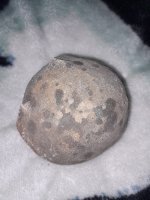I'm really not up on detector electronics beyond putting new batteries in. What I wonder is how much power can detectors use or produce and what is the legal limit? There must be some kind of limit so as not to mess up other common electronic devices used by everyone.
Now if we had no limits, any idea of how deep a detector could be made to detect a common coin? Not large metal things but small coins, etc.
OT
Now if we had no limits, any idea of how deep a detector could be made to detect a common coin? Not large metal things but small coins, etc.
OT





